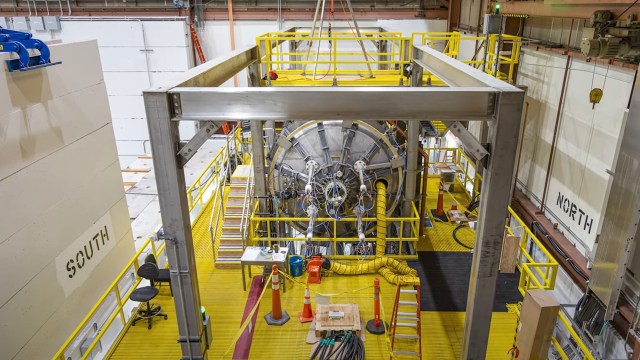A Breakthrough in Understanding Cosmic Forces
A groundbreaking device has made its debut at the Princeton Plasma Physics Laboratory, offering scientists a new way to study one of the most powerful forces in the galaxy. This innovative tool, known as the Facility for Laboratory Reconnection Experiments (FLARE), is designed to explore magnetic reconnection—a phenomenon that plays a critical role in various cosmic events.
According to a recent statement from the laboratory, FLARE is a first-of-its-kind facility that measures 12 feet long and 9 feet in diameter, weighing over 10 tons. It represents a significant advancement in the field of plasma physics, providing researchers with a unique opportunity to investigate how magnetic reconnection contributes to solar flares and disruptions in fusion devices.
What Is Magnetic Reconnection?
Magnetic reconnection occurs when magnetic field lines come together, break apart, and then reconnect in new configurations. This process releases vast amounts of energy, which can have profound effects on both space and Earth. In the context of the sun, these events can send charged particles hurtling toward Earth, potentially disrupting satellites, electrical grids, and the upper atmosphere.
In fusion research, particularly within tokamaks—doughnut-shaped devices that aim to harness clean energy—magnetic reconnection poses a challenge. The unpredictable nature of this phenomenon can lead to disruptions that hinder the development of sustainable fusion technology.
Advancing Scientific Research
FLARE is expected to provide insights that previous methods, such as spacecraft observations, high-powered simulations, and lab experiments, have not been able to capture. According to principal investigator Hantao Ji, the device offers a novel approach to studying magnetic reconnection, going beyond current capabilities.
The device can generate over 6 million joules of energy during an experiment—enough to power 1,000 homes for 5 seconds. Its primary goal is to determine whether magnetic reconnection occurs simultaneously at multiple X points, which are specific locations where magnetic fields intersect.
By simulating conditions found in outer space, FLARE will measure how reconnection heats plasma, the amount of energy involved, and the speed at which the process occurs. This data could be crucial in understanding and mitigating the effects of magnetic reconnection in both astrophysical and fusion environments.
The Broader Implications
Expanding research into magnetic reconnection and plasma physics could have far-reaching benefits. As scientists gain a deeper understanding of these phenomena, they may unlock new ways to harness clean energy, reducing reliance on fossil fuels and decreasing environmental impact.
Clean energy sources like solar panels, wind turbines, and other renewable technologies offer a promising alternative to traditional energy sources. These innovations not only help reduce costs but also provide resilience against fluctuating fuel prices and grid dependency.
As global temperatures rise due to the burning of fossil fuels, the need for sustainable energy solutions becomes increasingly urgent. Investing in scientific research, such as the work being done at the Princeton Plasma Physics Laboratory, is essential for developing technologies that can support a cleaner, more stable future.
Supporting Long-Term Innovation
The importance of long-term scientific research cannot be overstated. By funding initiatives like FLARE, government agencies and private organizations contribute to advancements that benefit science, technology, and society as a whole. These efforts lay the groundwork for future discoveries and innovations that can improve lives and protect the planet.
For those interested in staying informed about the latest developments in science and technology, subscribing to regular updates can provide valuable insights into how these breakthroughs shape our world. From renewable energy to space exploration, the possibilities are endless.






